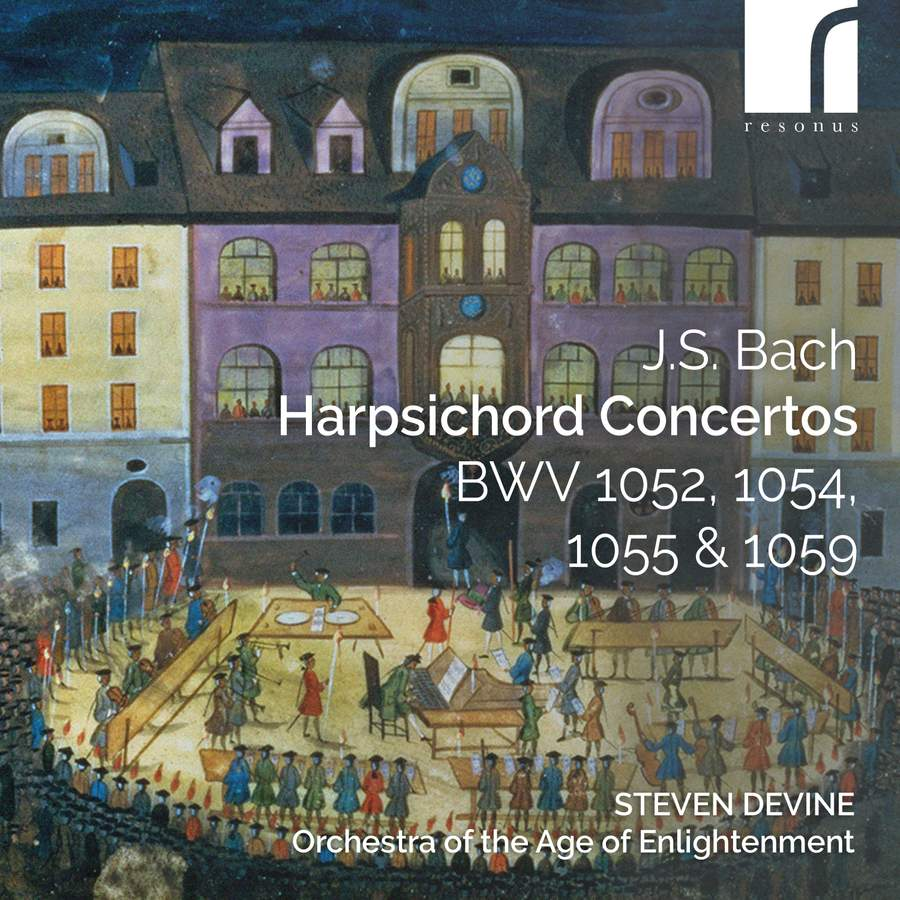J S Bach: Harpsichord Concertos
BWV 1052, 1054, 1055 & 1059
Steven Devine, Orchestra of the Age of Enlightenment
Resonus RES 10318. 63’30

This very welcome addition to the world of Bach recordings features three well-known harpsichord concertos plus what is, in effect, an entirely new concerto. Steven Devine’s programme essay sets out the often complicated history of the music played. The manuscript of these concertos is in Bach’s own hand. It contains seven concertos and nine bars of a D minor concerto, BWV 1059. There is strong evidence that only the first six concertos were intended as a set, with Bach’s traditional sign-off (Finis. S. D. Gl.) appearing at the end of the sixth concerto. The following BWV 1058 seems to have been an unsuccessful attempt at converting a violin concerto into a harpsichord concerto. The few bars of a D minor concerto (given the BWV number of 1059 despite its brevity) are of particular interest in this recording.





























